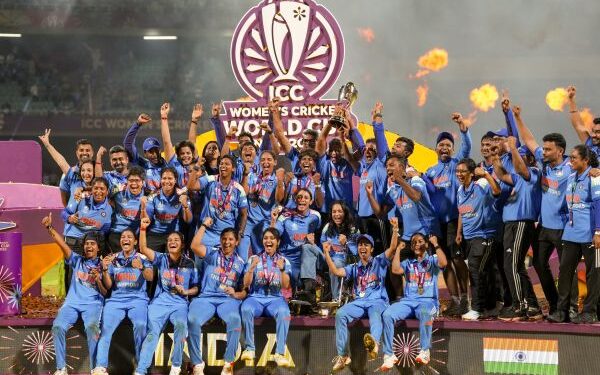The winning of the Women’s Cricket World Cup is not just about lifting a trophy, it is a victory for every woman who dares to dream in a male-dominated world. In a country like India, where we often hear about the struggles of women facing violence and discrimination at home and in public, this achievement shines as a powerful symbol of hope and progress.
This win is more than a sports story. It reflects a changing India, an India where women are breaking barriers and inspiring confidence among families and communities that once hesitated to let their daughters step into the wider world. A nation cannot move forward without the equal participation of all its citizens, and women form the backbone of every family and society. From nurturing children to managing the home, women have always played a vital role in shaping the moral and emotional strength of the next generation.
Today, we see men sharing more responsibilities at home, from cooking to caring for children. Yet, the influence of women remains central, from decisions about family health to education, food, and home decor. Their voice continues to guide the heart of every household.
At the same time, it is important to recognize the challenges that women still face. Violence against women continues to be a serious problem in India. According to the National Crime Records Bureau (NCRB), there were 6,589 dowry deaths recorded in 2021. Apart from physical violence, emotional and psychological abuse, such as harassment, stalking, and verbal attacks, remain widespread and often go unreported.
Despite these harsh realities, Indian women are showing remarkable progress. The Female Labour Force Participation Rate (FLFPR) has risen from 23.3% in 2017-18 to 41.7% in 2023-24. Much of this growth has come from rural India, where women are taking up more roles in both formal and informal sectors. In education too, women are making strong strides. Female enrolment in higher education has increased greatly, and in some fields like Arts, women now outnumber men. In 2021-22, the Gross Enrolment Ratio (GER) for women reached 28.5, higher than that of men. However, their presence remains limited in fields such as Engineering and Technology.
In sports, too, discrimination has long been a challenge. Women athletes often face problems like unequal pay, lack of proper training facilities, and less media coverage. Many also struggle with safety concerns and limited access to mentors. But the women of today’s India are rising above these obstacles. The triumph of the Women’s Cricket Team in the World Cup is not just a victory on the field, it is a symbol of courage, determination, and equality.
This historic moment will inspire millions of young girls to believe in themselves and dream bigger. It marks a turning point in how Indian society views women, not as dependents, but as leaders, achievers, and nation-builders. The success of these women cricketers shows that when given the right opportunity, women can bring glory not only to themselves but to the entire nation.
Their victory is a message to the world: a society that empowers its women moves toward a brighter, more equal, and more progressive future.





